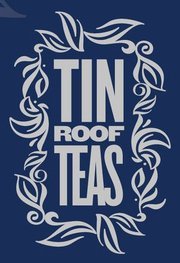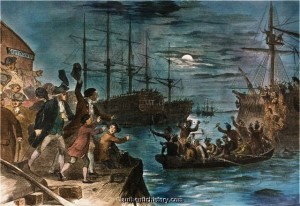 Welcome to my blog. The week of 1–7 July 2011, I’m participating with more than two hundred other bloggers in the “Freedom Giveaway Hop,” accessed by clicking on the logo at the left. All blogs in this hop offer book-related giveaways, and we’re all linked, so you can easily hop from one giveaway to another. But here on my blog, I’m posting a week of Relevant History essays, each one with a Revolutionary War theme. To find out how to qualify for the giveaways on my blog, read through each day’s Relevant History post below and follow the directions. Then click on the Freedom Hop logo so you can move along to another blog. Enjoy!
Welcome to my blog. The week of 1–7 July 2011, I’m participating with more than two hundred other bloggers in the “Freedom Giveaway Hop,” accessed by clicking on the logo at the left. All blogs in this hop offer book-related giveaways, and we’re all linked, so you can easily hop from one giveaway to another. But here on my blog, I’m posting a week of Relevant History essays, each one with a Revolutionary War theme. To find out how to qualify for the giveaways on my blog, read through each day’s Relevant History post below and follow the directions. Then click on the Freedom Hop logo so you can move along to another blog. Enjoy!
 Happy Fourth of July! This afternoon for a few hours, my sons and I will be at the Joel Lane Museum House in historical clothing, talking with visitors about patriot Joel Lane and the Revolutionary War in North Carolina. If you’re in the Raleigh area, stop by and say hello. Musket drills and firings, games for the children, tours of the house, and plenty of cool lemonade.
Happy Fourth of July! This afternoon for a few hours, my sons and I will be at the Joel Lane Museum House in historical clothing, talking with visitors about patriot Joel Lane and the Revolutionary War in North Carolina. If you’re in the Raleigh area, stop by and say hello. Musket drills and firings, games for the children, tours of the house, and plenty of cool lemonade.
 You can hardly talk about the Revolutionary War without bringing up the topic of tea, so Relevant History welcomes Tin Roof Teas’ general manager Ryan Hinson. Tin Roof Teas grew out of the Hinson family’s passion for tea and is a haven for tea lovers. Explore the world through the selection at Tin Roof Teas. For more information, check the company web site.
You can hardly talk about the Revolutionary War without bringing up the topic of tea, so Relevant History welcomes Tin Roof Teas’ general manager Ryan Hinson. Tin Roof Teas grew out of the Hinson family’s passion for tea and is a haven for tea lovers. Explore the world through the selection at Tin Roof Teas. For more information, check the company web site.
*****
Lapsang souchong is a black tea from the Fujian province in China. Historically considered a “man’s tea,” as well as a true Scotch lover’s best friend, Lapsang souchong (or lapsang for short) is considered to be one of the strongest varieties of tea. Lapsang souchong tealeaves are dark with a golden tip. The tea has an amber-red color when brewed, and a bold, assertive and smoky flavor. Only the Crocodile souchong and the Tarry souchong outweigh the original souchong in depth and smokiness.
Lapsang Souchong tea was probably one of the teas thrown in the harbor during the Boston Tea Party. It was known also as Bohea during that time period. According to old colonial ship manifests that can still be found to this day, about one-third of the tea exported from China in the eighteenth century was green tea, with green Hyson “the choicest of all.” But the bulk of the tea that Europeans, and thus European-Americans, consumed was black tea from the Bohea Mountains.
 On the night of 16 December 1773, the three tea ships in Boston Harbor contained 240 chests of Bohea, 15 of Congou, 10 of Souchong (all black teas), 60 of Singlo, and 15 of Hyson (both green teas). Green tea accounted for about 22% of the shipment’s total volume, and 30% of the value.
On the night of 16 December 1773, the three tea ships in Boston Harbor contained 240 chests of Bohea, 15 of Congou, 10 of Souchong (all black teas), 60 of Singlo, and 15 of Hyson (both green teas). Green tea accounted for about 22% of the shipment’s total volume, and 30% of the value.
So, for this Fourth of July if you want to really show your patriotism, brew yourself a nice pot of Lapsang and enjoy the brew that helped to truly launch the fight for independence.
*****
A big thanks to Tin Roof Teas and Ryan Hinson. Ryan will give away a chest supply of Lapsang souchong tea to someone who contributes a legitimate comment on this post today or tomorrow. No Indian costume required. I’ll choose one winner from among those who comment by Tuesday 5 July at 6 p.m. ET, then publish the name of the winner on my blog the week of 11 July. Delivery is available within the U.S. only.
**********
Did you like what you read? Learn about downloads, discounts, and special offers from Relevant History authors and Suzanne Adair. Subscribe to Suzanne’s free newsletter.

Annapolis MD, Edenton and Wilmington NC, and Providence RI had their own tea parties.
http://www.seakayak.ws/kayak/kayak.nsf/0/1EFB85C4277832EB8525716F005EB3E2
http://www.northcarolinahistory.org/commentary/20/entry
http://www.northcarolinahistory.org/commentary/148/entry
http://www.rilin.state.ri.us/studteaguide/rhodeislandhistory/chapt3.html
Perhaps other port cities/towns did too.
Still, I love my tea. But then, some of my ancestors were run out of Pennsylvania because they were Loyalists.
Hi Liz, yes, “tea parties” were common during the Revolution. In addition to your list, Charleston (Charles Town) and Savannah also had tea parties. I allude to the Savannah tea party in my first book, Paper Woman. Look at all that Southern history from the Rev War that isn’t recognized!
The interesting thing about the Edenton and Wilmington tea parties is that they were hosted by women. These ladies destroyed small, token amounts of tea in protest, rather than crates of tea — as if to acknowledge the value of the actual product.
The Wilmington tea party was witnessed by loyalist Janet Schaw, while she was visiting her brother. Her account of the incident, published in Journal of a Lady of Quality, is the only record we have of the Wilmington Ladies’ Tea Party. The journal itself makes for great reading. Schaw also witnesses the patriots running North Carolina’s last Royal Governor out of office.
I had a cuppa Margaret’s Reserve Darjeeling from Tin Roof Teas this morning. I love my tea, too. Haven’t been able to stop drinking it since I lived in England for awhile.
I have always loved tea and had it brewed around me, probably because my generation is the first of my father’s family to be born outside of Scotland. My grandfather cannot start his day without a strong cup of tea. I will have to rebel a little today like my mom’s ancestors and through my tea bags in our pool :)!. Thanks for the information, I had no idea what type of tea had been destroyed.
candc320@gmail.com
Thanks for these wonderful posts Suzanne! The irony in the ‘tea party’is that the tea was less expensive even with a tax on it. BUT, the point was taken (& so was the tea!)
Happy 4th of July
Colleen, my mom’s ancestors would have thrown the tea overboard, too.
Helena, thanks for stopping by. Glad you’re enjoying the posts. Yeah, the week of 1 – 7 July is kinda like the “high, holy days” for me. This year, I decided to take advantage of it and bring some author talent to the foreground — authors that many might not have heard of before.
Though I was raised on coffee and can’t start a day without it, I enjoy an occasional cuppa. In fact, I had a cuppa lapsang last night.
Hi John. Ah, a true patriot, drinking Lapsang for July the 4th. Would you agree with Ryan’s description of the variety?
Would you agree with Ryan’s description of the variety?
I must begin my day with two cups of strong black tea, otherwise I feel ill the entire day.
These are the words to the popular “Revolutionary Tea” song. The unknown author told the story well. Can you hear the loud “NEVER” as it was sung?
There was a rich lady lived over the sea,
And she was an island queen.
Her daughter lived off in the new country,
With an ocean of water between
With an ocean of water between, with an ocean of water between.
The old lady’s pockets were filled with gold,
Yet never contented was she
So she ordered her daughter to pay her a tax,
Of thrupence a pound on the tea.
Of thrupence a pound on the tea, of thrupence a pound on the tea.
“Oh mother, dear mother,” the daughter replied.
“I’ll not do the thing that you ask.
I’m willing to pay a fair price for the tea,
But never a thrupenny tax,
But never a thrupenny tax, but never a thrupenny tax.”
“You shall!” cried the mother, and reddened with rage.
“For you’re my own daughter you see.
And it’s only proper that daughter should pay
Her mother a tax on the tea,
Her mother a tax on the tea, her mother a tax on the tea.”
She ordered her servant to come up to her
And to wrap up a package of tea.
And eager for threepence a pound she put in
Enough for a large family,
Enough for a large family, enough for a large family
The tea was conveyed to her daughter’s own door,
All down by the Oceanside.
But the bouncing girl poured out every pound
On the dark and the boiling tide,
On the dark and the boiling tide, on the dark and the boiling tide.
And then she called out to the island queen
“Oh mother, dear mother,” called she.
“Your tea you may have when ’tis steeped enough.
But NEVER a tax from me,
But NEVER a tax from me, but NEVER a tax from me.”
It really sounds like a tavern song to me, and I can picture those tankards being raised high with maybe a bit of banging on the tables for emphasis.
I had no idea about the other tea parties. I loved the Wilmington tea party, after all, I’d still want to have some to drink afterwards!
I’m drinking some sort of generic orange/black tea now, but now I’m going to have to find some lapsang to try it out!
Thank you for this very interesting post. I had no idea what types of teas were thrown overboard.I do love a good cup of tea as well as coffee though.Happy 4th.
Carol L
Lucky4750 (at) aol (dot) com
Sheila, that’s great! Thanks for the song!
Melora, I’d have wanted to squirrel some away to drink afterward, too.
Carol, the colonists had obviously already cultivated a liking for diverse teas by the time the patriots threw the tea into Boston Harbour! Thanks for stopping by.
wow–it’s amazing how much history we don’t get taught; I never realized that the colonists enjoyed both black and green teas; thank you for this post (and for encouraging all of us to learn more about our past)…I’m a coffee lover generally, but am starting to drink more tea as I learn more about the different flavors and their characteristics
Did the American coffee drinking habit begin with resistance to the tax on tea? I guess I would have been run out of town on suspicion of being a Loyalist as well because I’d never be able to give up tea. Just today I drank Darjeeling, Earl Grey and Green Tea.
I am not only fascinated by the presence of green teas but also by the fact that the black teas were such strongly flavored ones!
None of my tea-drinking friends today particularly enjoy Lasang; we all find it too smoky. But then we’re all women!
Was there a division by gender, men drinking heavy black teas and women mostly drinking greens? Or was there some other division between black and green?
I also wonder about how much tea was used per cup; that could certainly affect the degree of intensity. Maybe we’re all using too much Lapsang when we try it!
(Candidly, my favorite teas are Nilgiris and Assams; I’m not a big green tea fan.)
I’m a little slow responding to everyone’s wonderful comments this morning. My sons and I had a big day yesterday. We started mid-day with a colonial demo at the Joel Lane Museum House for their annual Independence Day open house. Then we attended an evening party and rousing fireworks display with some science fiction authors, readers, booksellers, and their families. Thanks for all the comments and interest. On with the show!
Linda, yes, there’s so much about history that we haven’t been taught, and apparently it’s the fun stuff that’s omitted from our education. I’m delighted to see businesses like Tin Roof Teas offer tea tasting to educate the community, and I’m grateful to Ryan Hinson for providing us with those tidbits of information about the tea varieties in the Boston Tea Party.
Hi Shomeret, by the time official war broke out, real tea was difficult to obtain, so colonists had resorted to making herbal teas and yes, drinking more coffee. And sometimes what they called “coffee” bore little resemblance to what we’re drinking today. (Check out this link to see what I mean.) What’s interesting is watching how coffee prices now are rising — so does that mean we’ll give up coffee and return to drinking tea?
Mari, thanks for stopping by! Interesting questions. I’ll ask Ryan (who’s on vacation right now) whether he knows about gender preferences for tea varieties. He’s also very good at specifying how much of the different varieties of tea to use per cup and how hot the water must be.
Our German friends taught us the habit each afternoon of having tea. Although we never see them any more, we still adhere to this, which has become a tradition in our family. There is nothing so wonderful and vitalizing as a good cuppa!
Lesley, how nice to see you here! And I so agree with you about the afternoon tea custom. What a wonderful gift your German friends gave you. I received the same gift when I lived in England for about half a year back in the 80s. The world becomes a little more civilized when you pause to savor a cuppa tea in the afternoon.
As I grew up in a Southern family (albeit relocated to Michigan!) iced tea was the drink of choice for dinner every evening. My mother brewed fresh tea every day from tea leaves, using a tea ball. The only kind of tea I knew about was Lipton’s, in the red and yellow box. Now, as an adult, I’m learning about all the different kinds of teas, and what I have been missing all this time.
Sherry, I also grew up with iced tea, the Orange Pekoe/Black blend that’s standard for grocery store tea. It’s amazing how many varieties and flavors there are for teas!
If I ‘have’ to drink black, it has to be Ceylon.
Patg
Hi Pat, thanks for stopping by. Ceylon is popular with plenty of folks. Isn’t it great that we have so many choices for tea?
As a tea drinker all my life, I really enjoyed your historical post and the comments. Chestertown MD near our store in Oxford on the Eastern Shore also has a historic re-enactment of the dumping of the tea. You can see more at http://www.chestertownteaparty.com/thefestival.htm
Kathy
Thanks for the interesting post! The description of lapsang as a strong, “man’s tea” reminded me of one I’ve tried called Imperial Gunpowder. I don’t know how strong it is compared to lapsang, but the name makes it sound forceful!
Kathy, thanks for mentioning the Chestertown tea party and including the web site. I’d like to see other “tea party” towns celebrate their history in such a style. And you and I met briefly in the summer of 2007, when I was heading up to the Historical Novel Society’s conference in Albany, NY. Thanks for stopping by my blog!
And you and I met briefly in the summer of 2007, when I was heading up to the Historical Novel Society’s conference in Albany, NY. Thanks for stopping by my blog!
Matt, “Imperial Gunpowder” sounds like what my sons and I got the time we accidentally let English Breakfast tea steep for 10 minutes.
A late comment. Very interesting, especially the part about the Lapsang Souchong. My British husband drinks it every afternoon and evening. We haven’t found it here (Greenville, SC), so he orders it from England. We’ll look for Tin Roof Teas, but I shudder to think what the Crocodile and Tarry souchongs will smell like; I’m sure he’ll want to try them.
Very interesting post. Thanks!
Hi Ellis! Wow, your husband’s quite a bold fellow for drinking Lapsang souchong in the afternoon and evening. The caffeine content on that stuff must be way up there close to coffee.
The phone number for Tin Roof Teas is 919.834.9000. When you folks order the Lapsang, ask Ryan if he’ll send samples of the other teas. Because he provided me with samples, I discovered several teas that I like at Tin Roof Teas.